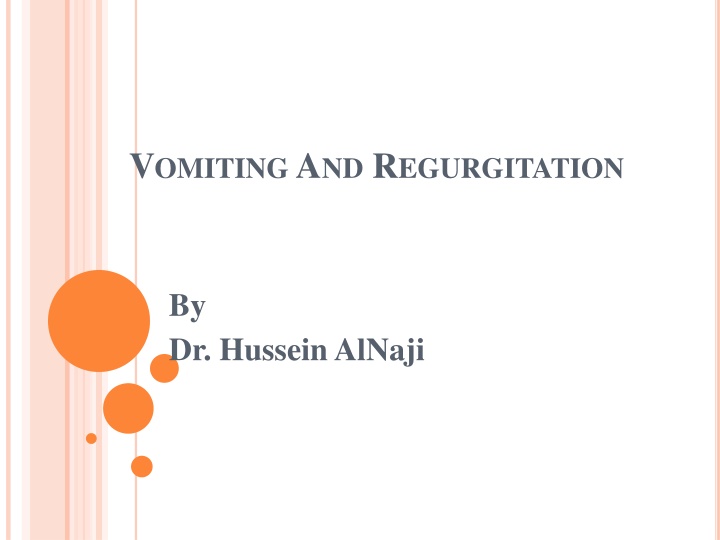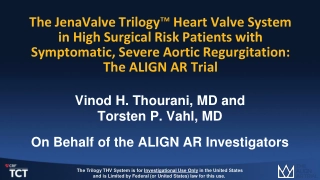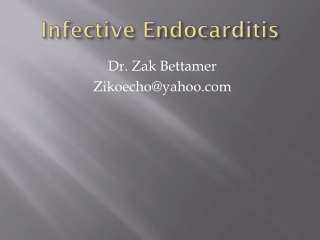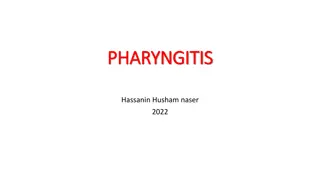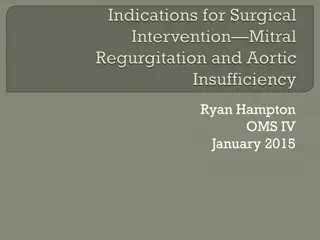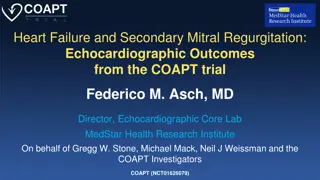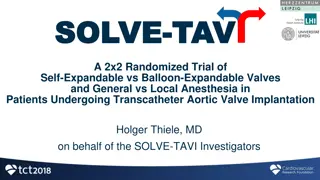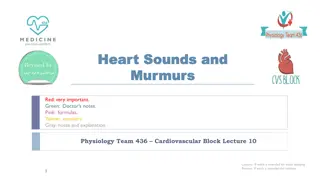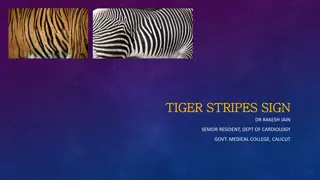VOMITINGAND REGURGITATION
Vomiting and regurgitation are distinct processes involving the expulsion of stomach contents in animals. While vomiting is a forceful ejection typically seen in monogastric animals like dogs and cats, regurgitation is the expulsion of undigested food without the forceful abdominal contractions associated with vomiting. The causes, mechanisms, and implications of both processes differ, highlighting the importance of recognizing and addressing these gastrointestinal disturbances in animal health.
Download Presentation

Please find below an Image/Link to download the presentation.
The content on the website is provided AS IS for your information and personal use only. It may not be sold, licensed, or shared on other websites without obtaining consent from the author.If you encounter any issues during the download, it is possible that the publisher has removed the file from their server.
You are allowed to download the files provided on this website for personal or commercial use, subject to the condition that they are used lawfully. All files are the property of their respective owners.
The content on the website is provided AS IS for your information and personal use only. It may not be sold, licensed, or shared on other websites without obtaining consent from the author.
E N D
Presentation Transcript
VOMITINGAND REGURGITATION By Dr. Hussein AlNaji
Vomiting Vomiting is the forceful ejection of contents of the stomach and the proximal small intestine through the mouth, and is a complex motor disturbance of the alimentary tract. It is a vigorously active motion signaled by hypersalivation, retching, and forceful contractions of the abdominal muscles and diaphragm. Vomiting is essentially a protective mechanism with the function of removing excessive quantities of ingesta or toxic materials from the stomach.
Note that vomition is exceedingly rare in horses and is usually a terminal event. Vomition occurs in two forms: projectile and true vomiting. Projectile Vomiting This is not accompanied by retching movements, and large amounts of fluid material are ejected with little effort. It is almost always as a result of overloading of the stomach or forestomach with feed or fluid.
True Vomiting As it occurs in monogastric animals like the dog and cat, true vomiting is accompanied by retching movements including contraction of the abdominal wall and of the neck muscles and extension of the head. It is usually a result of irritation of the gastric mucosa. Vomiting is commonly designated as being either peripheral or central in origin depending on whether the stimulation arises.
Centrally at the vomiting center or Peripherally by overloading of the stomach or inflammation of the gastric mucosa, or by the presence of foreign bodies in the pharynx, esophagus, or esophageal groove. Central stimulation of vomiting by apomorphine and in nephritis and hepatitis are typical examples, but vomiting occurs rarely, if at all, in these diseases in farm animals. Vomiting complications (1)serious effects on fluid and electrolyte balance because of the losses of gastric and intestinal contents. 2- Aspiration pneumonia. 3-laryngeal obstruction are potentially serious consequences of vomiting.
True vomiting is rare in farm animals True vomiting is not a feature of gastric disease in the horse for two reasons. First, the strong cardiac sphincter inhibits the release of stomach contents; in horses rupture of the stomach is more likely to occur before vomiting takes place. Second, the soft palate and epiglottis combine to affect a seal between the oral and nasal parts of the pharynx so that any vomited stomach contents must be discharged through the nasal cavities and not through the mouth.
Regurgitation Regurgitation is the expulsion through the mouth or nasal cavities of feed, saliva, and other substances that have not yet reached the stomach. In most cases it is caused by abnormalities of the esophagus that interfere with swallowing. A common example in large animals is the regurgitation of feed, saliva, and perhaps bloodstained fluid from the esophagus of the horse with esophageal obstruction.
Causes include the following: 1. Third-stage milk fever (loss of tone in the cardia) 2. Arsenic poisoning (acute inflammation of the cardia) 3. Poisoning by plants 4. Veterinary administration of large quantities of fluids into the rumen (regurgitation occurs while the stomach tube is in place) 5. Use of a large-bore stomach tube 6. Cud-dropping: a special case of regurgitation usually associated with abnormality of the cardia. Ruminants regurgitate rumen contents as part of rumination, but the material is not expelled from the mouth or into the nasal cavities. Nasogastric regurgitation or gastric reflux occurs in the horse.
Diarrhea, Constipation,And Scant Feces Diarrhea and constipation are the most commonly observed abnormalities in fecal consistency, composition, and frequency of defecation. DIARRHEA Diarrhea is the increased frequency of defecation accompanied by feces that contain an increased concentration n of water and decrease in dry matter content. The consistency of the feces varies from soft to liquid.
Abnormalities of peristalsis and segmentation usually occur together, and when there is a general increase in peristaltic activity there is increased caudal flow, resulting in a decrease in intestinal transit time and diarrhea. Because of a lack of absorption of fluid the feces are usually softer than normal, the dry matter content is below the normal range, and the total amount of feces passed per day is increased.
Common causes of diarrhea are 1. Enteritis, including secretory enteropathy 2. Malabsorption, e.g., caused by villous atrophy and in hypocuprosis (caused by molybdenum excess) 3. Neurogenic diarrhea as in excitement 4. Local structural lesions of the stomach or intestine, including the following: a. Ulcer, e.g., of the abomasum or stomach b. Tumor, e.g., intestinal adenocarcinoma
5. Indigestible diet, e.g., lactose intolerance in foals 6. Carbohydrate engorgement in cattle 7. In some cases of ileal hypertrophy, ileitis, diverticulitis, and adenomatosis 8. Endotoxic mastitis in cattle (splanchnic congestion) 9. Small colon impaction in horses a. Sand colic in horses b. Chronic and acute undifferentiated diarrhea in horses 10.Vagus indigestion in cows causes pasty feces but bulk is reduced; these cases may be mistaken initially for other causes of diarrhea.
